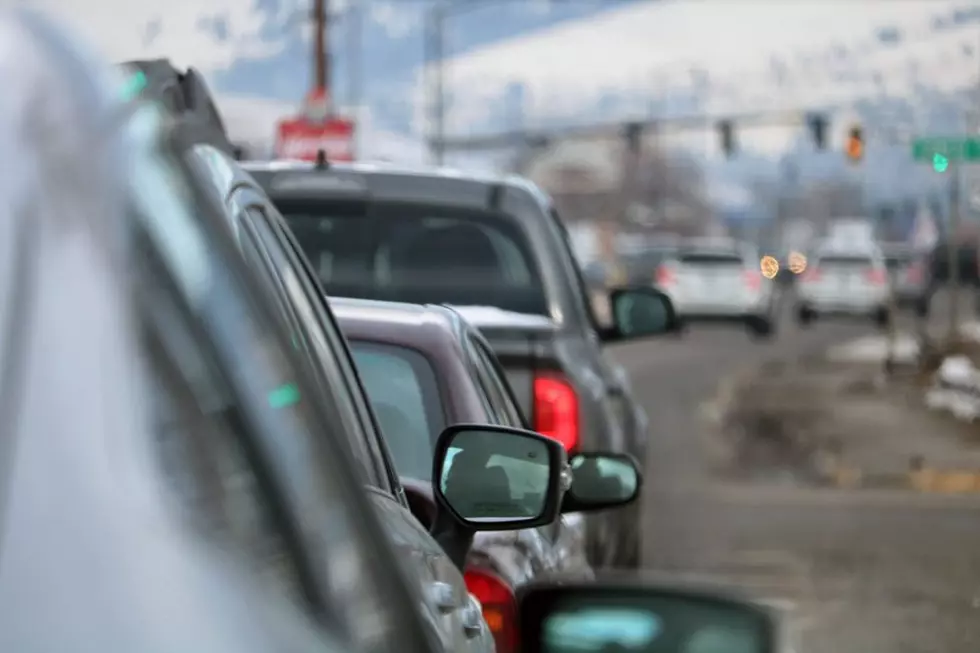
Missoula’s new transportation plan to explore transit, trails
Martin Kidston
(Missoula Current) As the city dives into its new Long Range Transportation Plan, it's looking at a range of facts and figures that will, when the process is finished, inform everything from future bike lanes to how the public transit system operates.
Required every four years, the plan will also help guide future investments across a number of partners and agencies.
“We're working in coordination and collaboration with Mountain Line and the Missoula Urban Transportation District,” said Aaron Wilson, the city's transportation manager. “We're doing them simultaneously, hoping we can gain some efficiency in the process and increase the cohesion between these two plans.”
Since the last plan was adopted four years ago, the city has implemented its Downtown Master Plan and adopted the Midtown Master Plan, as well as a citywide parking plan. Other major planning efforts now underway include the airport master plan, the Wye infrastructure plan, and work to reform city code and building regulations.
Wilson attributed such planning efforts to the city's success in landing federal funding. Over the last 18 months, Missoula has netted roughly $64 million in transportation grants.
“It's allowing us to get these big regional projects underway,” said Wilson. “All these plans are happening effectively at the same time. We have a good opportunity to get all these plans generally moving in the same direction.”
Facts and Figures
With the new transportation plan underway, the city has consulted Nelson/Nygaard, which is currently identifying local demographic and transportation data. In the four years since the last plan was adopted, Missoula's population has grown 0.81%.
Zachery Zable, a project manager with Nelson/Nygaard, said it's comparable to Spokane – another rapidly growing city in the Northwest that's facing similar housing pressure.
“This growth is expected to continue throughout our Metropolitan Planning Area,” said Zable. “Over the last four years, there's not been a change in the ratio between renters and owners. But we do expect that in the future, as housing prices continue to stay high and more multi-family developments come on line, this ratio of renters will likely increase.”
Areas of growth around Missoula County could help inform future transportation investments. Currently, Brooks, Broadway and Reserve streets are the city's busiest. And while portions of those streets include bicycle facilities, the new plan will look to address gaps in the system, and rider safety.
“The amount of on-street and off-street facilities is planned to increase considerably in the future,” said Zable. “It's one thing we'll look at as part of our prioritization – how we make sure we feed into those updated networks when it comes to neighborhood greenways and to provide protection for the on-street network.”
Public Transit
Missoula's public transit system will also play prominently in the new Long Range Transportation Plan. And while the system took a hit during the pandemic, figures suggest it's on the mend.
Kyle Taniguchi, the deputy project manager with Nelson/Nygaard, said Mountain Line's revenue hours – the tool used to measure the system – was relatively stable for 10 years, averaging around 50,000 hours per year.
That changed in 2023 when service hours jumped to more than 70,000.
“That was due to a variety of different service enhancements,” he said. “When we think about the transit strategic plan, this is an excellent position to be starting from.”
Ridership fell during the pandemic and while its growing again, it hasn't fully returned to pre-pandemic levels. Still, ridership has grown over the past two years, marking what the consultants described as a success.
“We're not quite back to pre-pandemic levels,” said Taniguchi. “But there's an opportunity to think with this strategic plan how we can continue to invest in transit to continue this upward trajectory we're currently on now.”
A recent mapping exercise found that 15-minute service on Route 1 and 2 enjoy the strongest ridership, along with Route 6. Together, they average about 60% of Mountain Line's ridership.
“These routes or corridors are really the building blocks for a really strong future transit network,” said Taniguchi. “We can think about whether it makes sense to have more frequent weekend service or future investment, such as Bus Rapid Transit (BRT).”
The Brooks Street BRT project received a boost in 2021 with an $850,000 planning grant from the U.S. Department of Transportation. The city is now working toward a final design it can submit in pursuit of federal funding.
As envisioned, the project would convert the Brooks Street corridor into a BRT with a dedicated center-running bus and transit stops at various locations. The system would provide quick service along the corridor to and from downtown while better connecting the Midtown District.
“Once we have clarity on that, we'll make sure it's fully incorporated into our network to make sure we're fully leveraging that BRT investment,” said Taniguchi. “Whether that's reorienting routes to feed into that or identifying launching points for micro-transi, those are all things we'll be considering.”
While several routes enjoy strong ridership, others do not, Taniguchi said. For those routes, the new transportation plan could explore whether maintaining fixed bus routes makes sense or if micro-transit or on-demand service makes more sense.
They'll also look at the public transit system's capital needs. Currently, the system has 346 stops but only 66 have some form of seating and 56 have a shelter.
“Those are all types of things well be looking at, to make sure we're balancing not only the service side of the plan, but also any type of capital investments needed to move the needle and encourage people to take transit within the community,” said Taniguchi.
